 |
 |
 |
| |
Hepatocellular Carcinoma (HCC) incidence in Chronic Hepatitis C patients (CHC) according to Sustained Virologic Response (SVR) and baseline characteristics
|
| |
| |
Reported by Jules Levin
EASL April 12, London, UK
T. Purevsambuu, S. Bota, F.Hucke, H. Hofer, P. Ferenci, W. Sieghart, M. Peck-Radosavljevic
Department of Internal Medicine III, Division of Gastroenterology and Hepatology, Medical University of Vienna, Vienna, Austria
------------------------------
from Jules: in this study 1600 patients were evaluated. Overall the rate of developing HCC among patients who achieved SVR was 1.8% vs 12.1% for patients NOT achieving SVR. This study found as other previous studies have found, a key factor in developing HCC despite achieving SVR is the stage of disease a patient has when treatment is started. If a patient already has cirrhosis when starting treatment even if SVR is achieved there remains a risk of still developing HCC -- in this study, if a patient had F4 fibrosis stage the rate of developing HCC was 7.7% among those who achieved SVR, & 2.4% if the patient's fibrosis stage was F3, but 0% if the fibrosis stage was earlier F(0-2). Even if achieving SVR if a patient already had cirrhosis when treatment was started it is recommended that for the remainder of their life every 6 months they should be evaluated for HCC, an MRI is recommended every 6 months. In this patient study group for patients without an SVR the rate of developing SVR was 15.6% among patients with F4 fibrosis stage, 5.4% with F3 fibrosis stage & 3.9% with F(0-2) fibrosis stage.
--------------------------------
Background and aims: Chronic Hepatitis C virus infection is a common cause of HCC worldwide. Our aim was to assess the HCC incidence in relation to antiviral treatment response and baseline charactersitics of a large number of patients from a single institution.
Methods: We retrospectively collected data of HCV patients, who were diagnosed between 1989-2011 and treated at the AKH-University Hospital of Vienna. We analyzed the HCC incidence in patients with SVR and without SVR according to the patients' baseline characteristics.



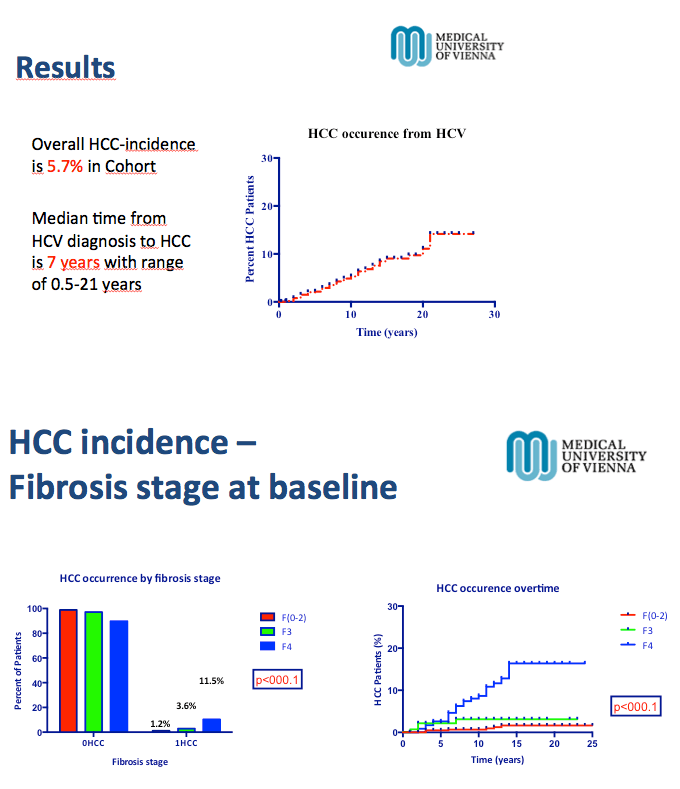
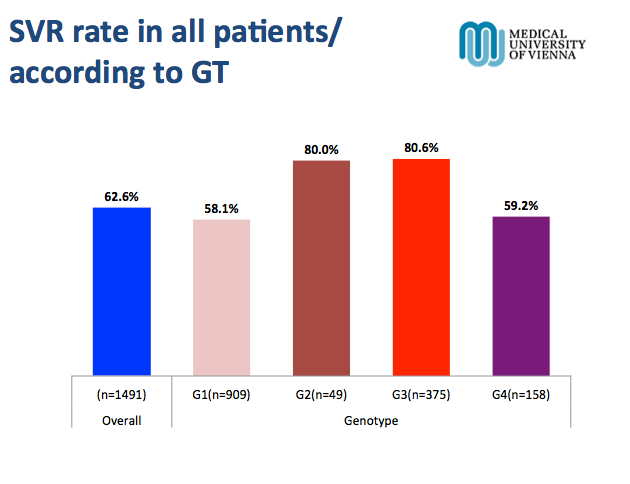
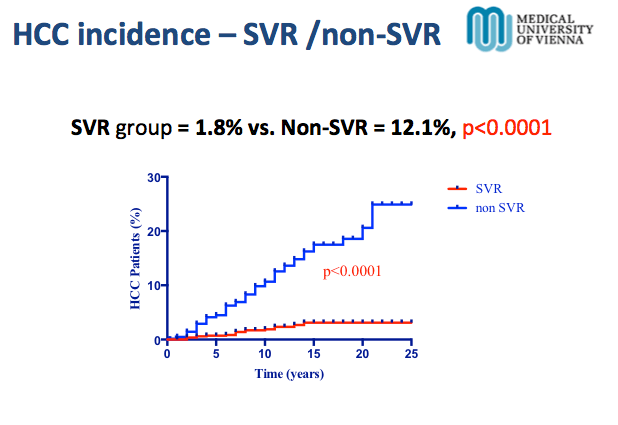
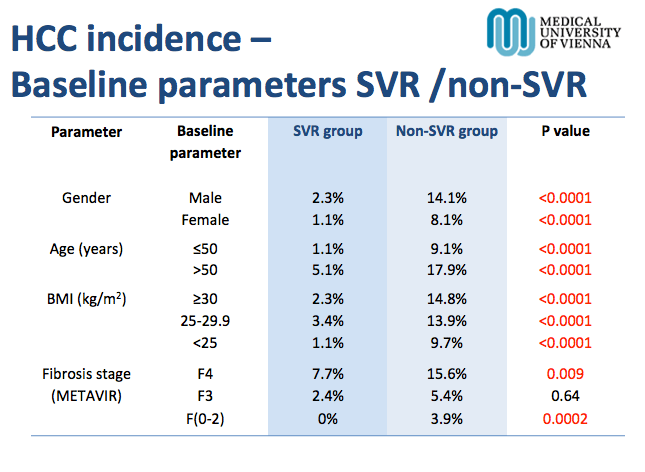
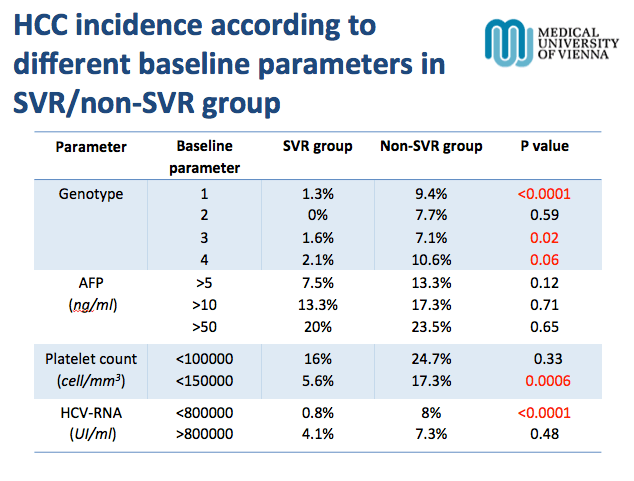


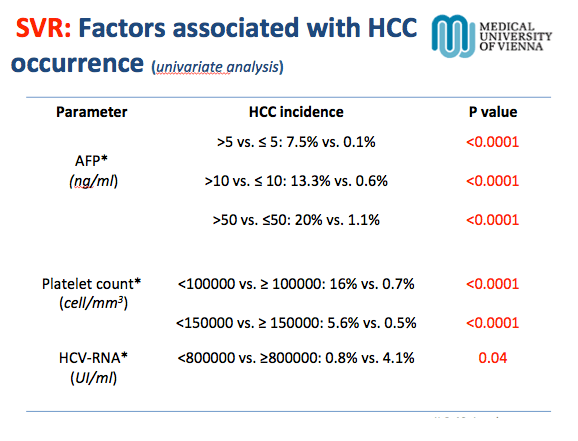
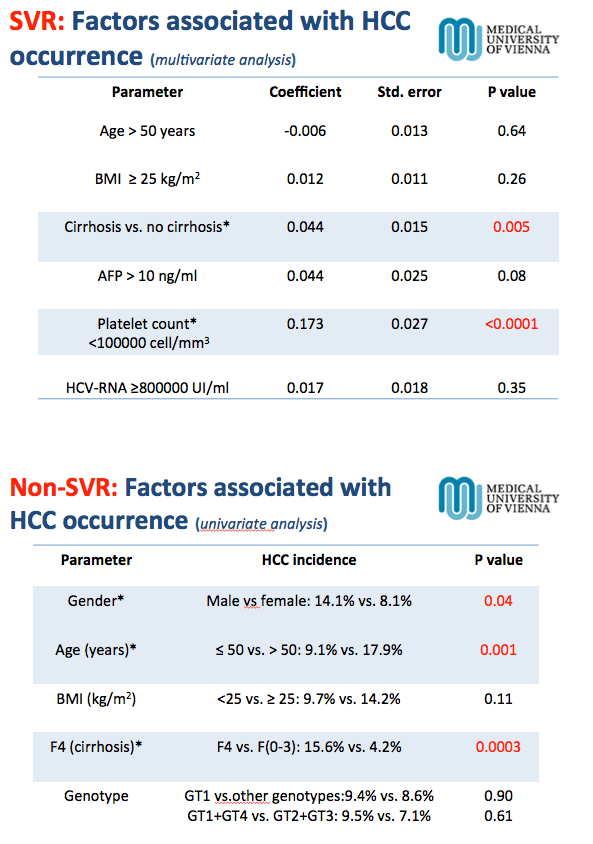
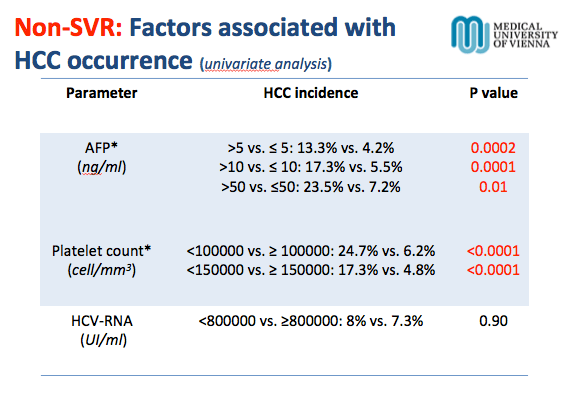
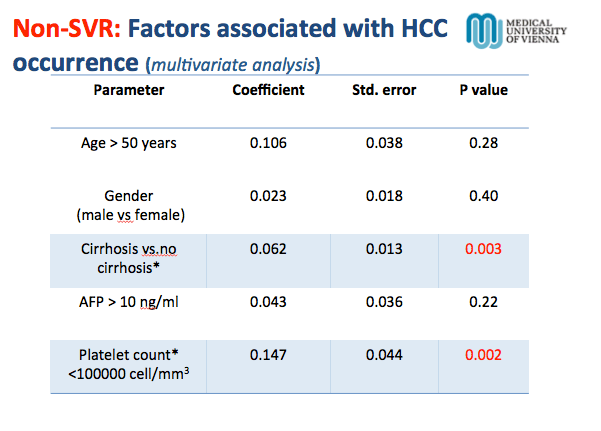
|
| |
|
 |
 |
|
|